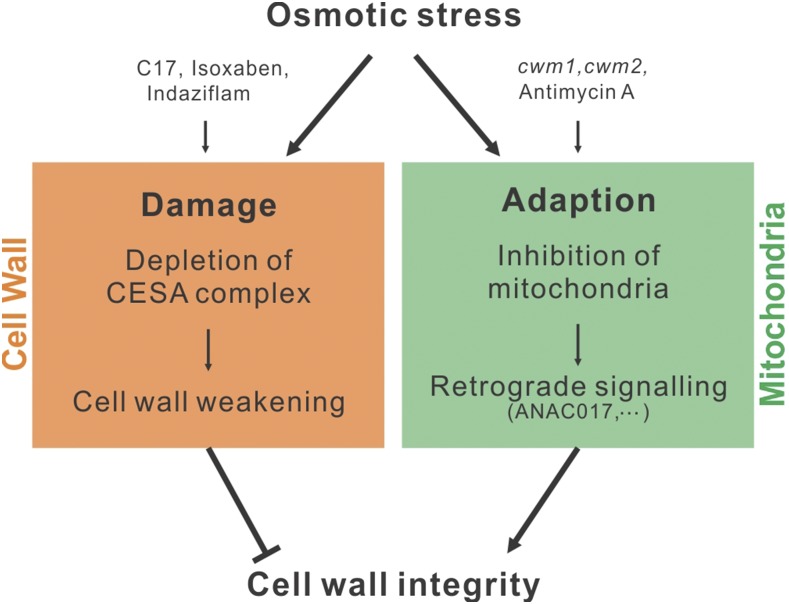Figure 12.
Model Depicting the Relationship between the Cell Wall and Mitochondria under Osmotic Stress Conditions.
Osmotic stress exerts at least two different effects on the plants: damage and adaption. Damage occurs through the depletion of CESA complexes from the plasma membrane, resulting in decreased cellulose production that in turn leads to cell wall weakening and loss of cell wall integrity. Adaptation occurs in response to inhibition of mitochondrial activity, which triggers retrograde signaling that eventually results in cell wall fortification. CESA inhibitors (including C17, isoxaben, and indaziflam) mimic the process of cell wall damage, whereas inhibition of mitochondrial activity can be simulated by mutations in mitochondrial editing genes (such as CWM1 and CWM2) or application of chemical inhibitors (such as AA). The presence of both CESA and mitochondrial inhibitors likely mimics osmotic stress conditions, in which a decrease in cellulose content is matched by retrograde-induced cell wall modifications. Cell wall, orange; mitochondria, green.

